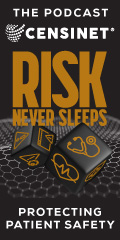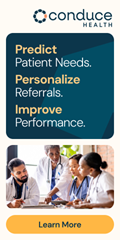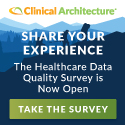Readers Write: Why Patient Control of their Own Data is the Key to Health Equity
Why Patient Control of their Own Data is the Key to Health Equity
By Oleg Bess, MD
Oleg Bess, MD is co- founder and CEO of 4medica of Marina Del Rey, CA.

To enable coordinated care, improve patient outcomes, and better manage costs, it is imperative that providers, payers and other healthcare stakeholders share data. This requires interoperability between authorized members of a healthcare network.
But an often-overlooked stakeholder in discussions about healthcare networks and data sharing is the patient, which is ironic given that the patient really is the ultimate healthcare stakeholder. Yet patients often struggle to access even the most basic digital information about their health.
Patients may have multiple providers, each with their own patient portals and login requirements. They may have a provider that “data hoards” to prevent patients from switching to a competitor. Patients may not be able to access all their medical records. Patients particularly struggle to access diagnostic tests from labs, which is a serious problem since diagnostic test results are the most critical information clinicians use when devising treatment plans.
Ensuring patients can easily and securely access their digital health records increases both data transparency and patient control of their personal health information. Beyond the obvious benefits to individuals who are able to view and manage their health information, the increasing ability of patients to control their own health data is the key to health equity on a larger scale. That’s because segments of the population negatively impacted by social determinants of health (SDOH) such as unemployment, no access to primary care, or lack of health insurance most need access to their health information even as they are less likely to have that transparency.
Consider the patient who uses emergency rooms (ERs) as their provider of primary care. As this patient bounces from one ER to another, invariably getting tests, they often are unable to inform clinicians about where they previously were tested or the results. This typically leaves an ER clinician with little choice but to order a new round of tests, some of which already may have been conducted.
More importantly from a clinical view, lack of data transparency and control for patients can be dangerous or even fatal. As an obstetrician-gynecologist, I have seen many pregnant women come into the ER bleeding internally and requiring immediate surgery. If clinicians had access to the patient’s records from recent previous visits to other ERs – where she likely had been tested for human chorionic gonadopotropin (HCG), the pregnancy hormone, or given an ultrasound – they would know whether the patient was having a miscarriage or a ruptured ectopic pregnancy, conditions that require entirely different clinical approaches. This right clinical information in the right hands at the right time literally can save lives.
Data transparency for patients can be a powerful catalyst for improving health equity by empowering people lacking primary care or health insurance to access and manage their data. It will require user-friendly health data apps that enable access to aggregated data. I am confident these apps are coming soon because data transparency for providers and patients are essential to achieving the value-based care goals of improving outcomes while reducing costs.



















































































The primary point of using the Cloud is using operating expenses vs limited capital ones and avoiding having to update…